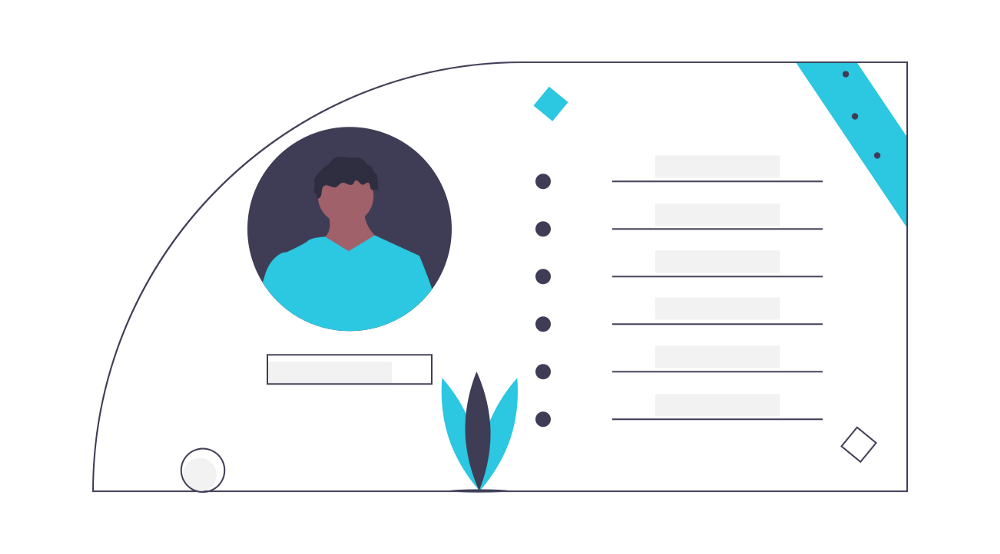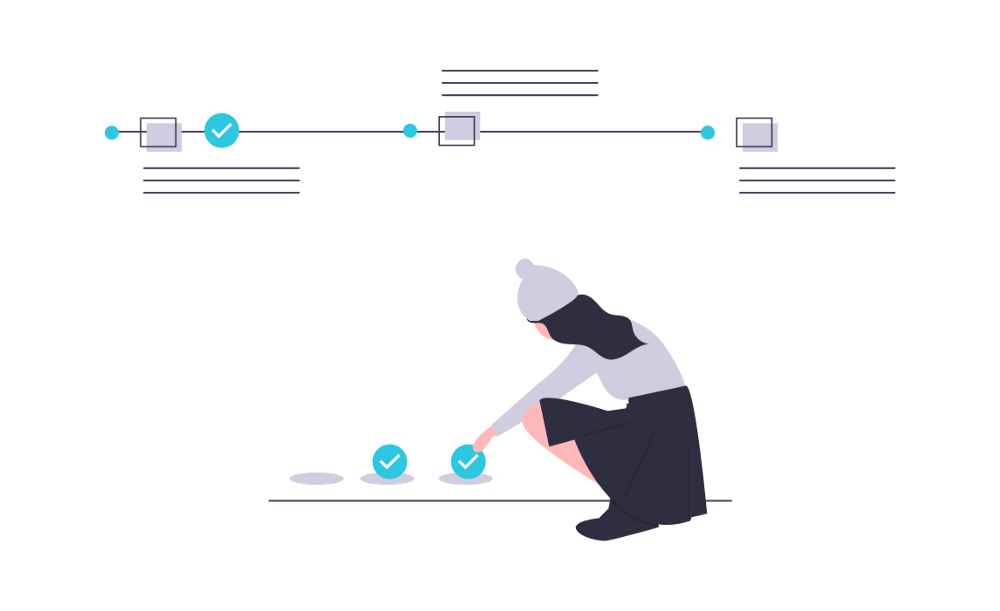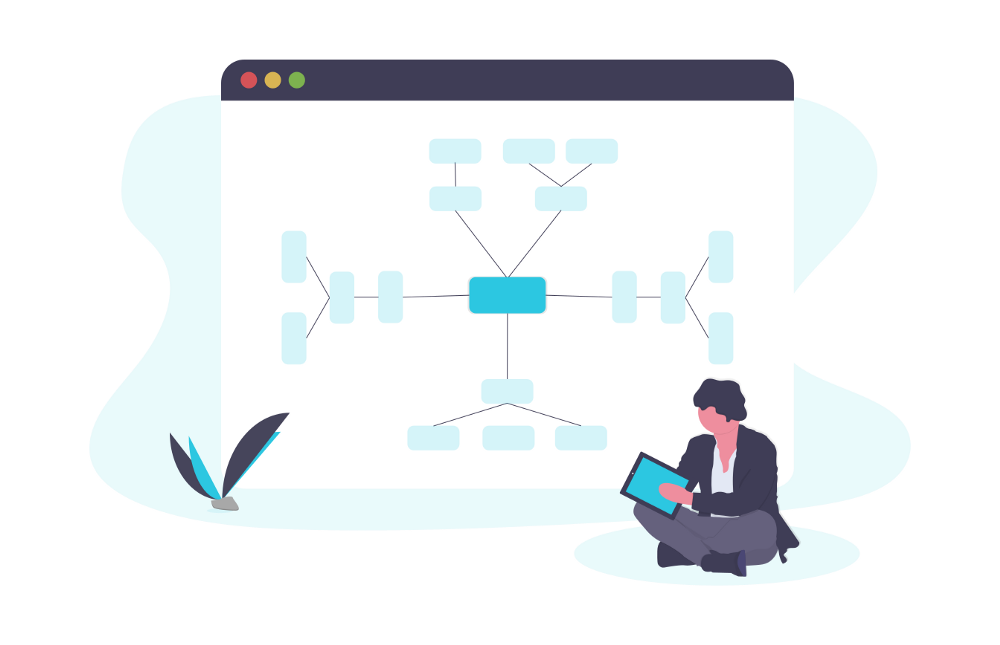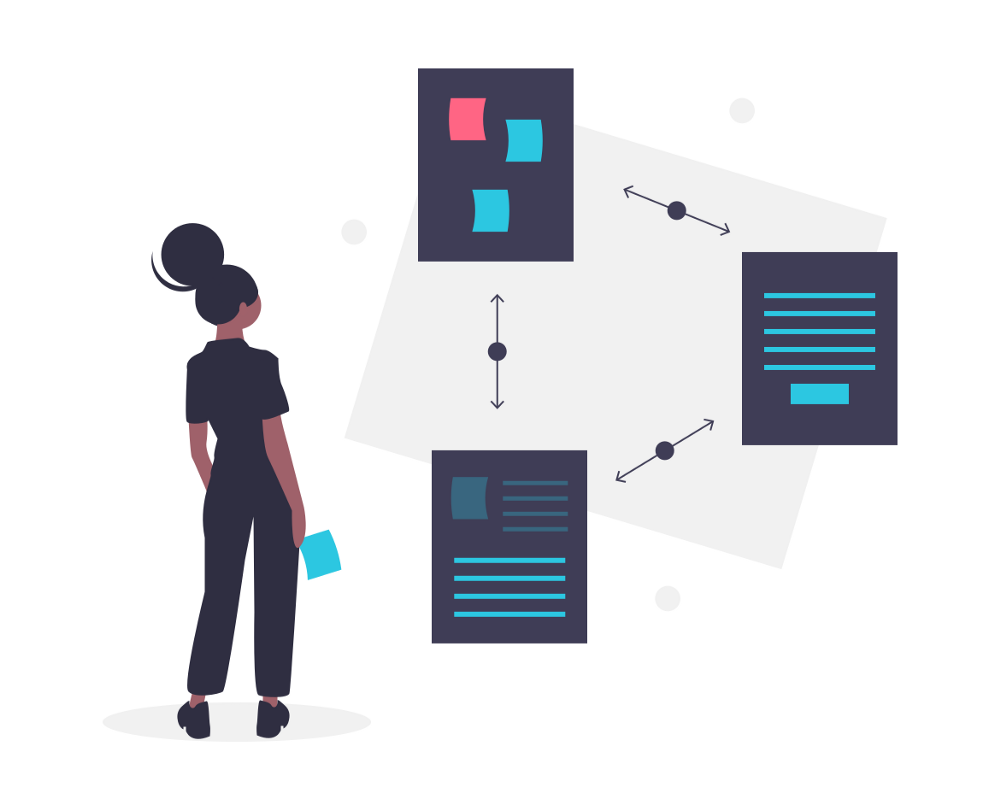During my career I have spent time working closely with Service Designers on a variety of projects and products, and I believe there are five key lessons from the Service Designer discipline that can help enhance Product Management.
Before we begin: what is service design, again?
Service design applies process, a set of methodologies and a particular mindset to design the best experience for each product and service.
These are the key five lesson I have learnt from my work with service designers:
1. Focus on the user
 Persona documentation, credit undraw.co
Persona documentation, credit undraw.co
What better way to delight consumers than to design services based on their expectations, wants, needs and feedback?
This is far more beneficial for users than a team designing products the way they think they should work.
Using tools like personas and user testing, can help a team focus on a specific type of user challenges and needs.
2. Be co-creative, involve as many people as possible
 Collaborative working, credit undraw.co
Collaborative working, credit undraw.co
All stakeholder groups should be involved in the service design process. Not just customers — everybody, including the talent behind the touch points in your organisation.
Co-create with as many useful perspectives as possible when deciding on a new feature, from the developers and software testers, to the customer service team supporting your product. Your solution will have to be not only desirable by the users, but viable and feasible as well.
3. Follow the sequences

User interactions sequence, credit undraw.co
Tackle complex problems, by finding root causes.
Service design looks at user interactions as a sequence, services should be approached as a sequence of related actions, interactions or events. This helps identify challenges a user may have occurred outside of the product and therefore caused them to have a bad experience with your product or service.
Consider the steps and actions taken in the product, and the context the user is in. Everything is connected. Service design understands that a users’ problem might not be right where it appears but could be a consequence of something that went wrong earlier.
4. Get a clear picture
 Mapping product flows, credit undraw.co
Mapping product flows, credit undraw.co
Many services happen without users noticing. They create value and positive experiences but leave no tangible trace.
Service design brings these helpful ghosts out of hiding and into the real world. This is to the benefit of both the users and the development team.
By mapping how your product and services run behind the scenes and in front of users, allows you to spot where your product is lacking, where it is doing well and who is responsible for it. It allows you to connect problems to touchpoints and create extra focused solutions.
5. Approach challenges holistically
 Having a holistic approach, credit undraw.co
Having a holistic approach, credit undraw.co
Consider the whole product ecosystem.
Thinking holistically means being aware of where in the market your product sits, the interactions users have with it, and context users are in when interacting with the product itself. This allows you to discover more feature opportunities or to make your product more consistent to your brand.
What part of the experience do you need to get right to make it truly delightful? Trick question: you need to get every part right. The whole environment in which your service lives should be considered when looking to improve.
But what is service design, really?
Let’s face it: as illuminating as definitions and key principles might be, they aren’t going to give you working knowledge of what service design is and how to use it. They give you the basic idea, but they don’t give you the reality. They’re generic, arbitrary and almost impossible to quantify objectively. And as a result, they don’t create a meaningful understanding of the practical side of service design.
In order to get the best out of service design and see what it can do for you, you’re going to have to trust the method:
- Be sure you fully understood what is going on on the user side and the organisation side before going into solution mode.
- There is no holy grail of solutions but there are multiple ways to solve a problem. Keep going back to exploring and iterating to find what fits best for you and your customer.
Service design doesn’t only consider what works for the user — it also examines what works for your company.
The products and services you decide to design and develop might look brilliant in theory, but what if they fall apart when you start testing with real users? You’ll be back at the drawing board, minus a considerable amount of money and time.
Instead of finding out further down the road that your product just doesn’t work for your users and having to start all over, you need a method to determine where to invest your resources so they’ll get results. And while there are many methods to choose from, service design stands out from the pack.
It doesn’t only consider what works for the user — it also examines what works for your company. For the platform behind it, the internal support structure, the market. It takes the front and back end into account and actively engages all stakeholders, involving them in the design and development process to ensure the outcomes you ultimately arrive at can provide a rock-solid foundation for scaling up.
Bonus Lesson!
Fall in love with the problem, not the solution and get comfortable with uncertainty
In summary, I believe there are many things product managers can learn from service designers, and service design principles. In addition to these key lessons, I have also learnt about running workshops such as design sprints from my work with service designers.
Just like building your skills of product management, in order to gain a greater understanding of service design I would always recommend the “learn by doing” method. And don’t forget to get everyone involved and have fun.


